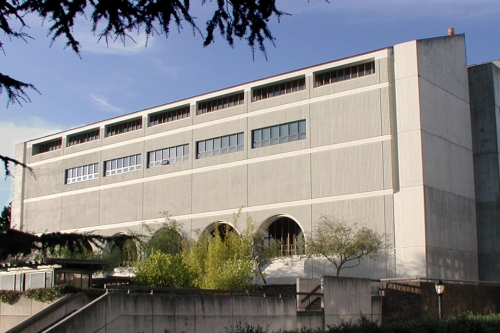The National Science Foundation recently announced the funding of two projects that address climate change in the area of ground engineering, to be led by Professor Kenichi Soga.
In dense urban areas, the underground is exploited for a variety of purposes, including transport, additional residential/commercial spaces, storage, lifelines, geothermal heat pump systems, and industrial processes. These uses all can contribute to changes in subsurface temperature, groundwater levels and flow.
With the rise in urban populations and significant improvements in construction technologies, the number of subsurface structures is expected to grow in the next decade, leading to subsurface congestion and potentially deleterious effects to subsurface temperature and water conditions. With correct planning, subsurface temperatures can be harnessed beneficially. However, if unchecked, they can result in a high environmental and economic costs.
Modeling and Monitoring of Urban Underground Climate Change (MUC2)
In the project “Modeling and Monitoring of Urban Underground Climate Change (MUC2)”, Professor Kenichi Soga and Professor Matthew DeJong, in collaboration with researchers at the University of Cambridge, will develop a framework for monitoring and predicting temperature and groundwater distributions at high resolutions in the presence of underground heat sources and sinks.
A low cost and reliable underground weather station using the fiber optic sensing technologies will be developed and installed at sites in the US and UK. A high-performance computing based thermo-hydro coupled underground climate change code will be developed to simulate the temperature and groundwater variation with time at the whole city scale.
The main scientific deliverable from the district- and city-scale numerical simulations and the experimental temperature monitoring is a series of archetype emulators, which are defined based on the geological characteristics, above ground built environment, such as surface and buildings types, and the density and type of the underground structures. These archetype emulators will allow efficient city-scale modelling and enable application of the methodology to any other city or region with similar characteristics of above and underground built environment.
The ultimate goal is for every city to generate reliable maps of underground climate, with the ability to understand the influence of future urbanization scenarios.
It is estimated that soil contains approximately three times as much as carbon as the atmosphere, and improving soil management thus plays a critical in mitigating climate change. However, the current understanding of the effects of soil management on carbon cycling and the emission of major greenhouse gases is limited. Carbon effluxes from soils are largely controlled by root respiration, and microbial respiration of soil organic matter including rhizospheric organic carbon. All of these processes are highly sensitive to soil structure.
Dynamic Coupling of Soil Structure and Gas Fluxes Measured with Distributed Sensor Systems: Implications for Carbon Modeling
In the project “Dynamic Coupling of Soil Structure and Gas Fluxes Measured with Distributed Sensor Systems: Implications for Carbon Modeling,” Professor Soga in collaboration with the Colorado School of Mines and Rothamsted Research in the UK, will investigate the link between the changes in soil structure and the measured concentrations of major greenhouse gases using the distributed fiber optic sensing technology and underground wireless sensor network technology.
The data will be used to explore the scope for including microscopic soil structure in soil carbon models and hence improve our fundamental understanding of biochemical processes occurring across various spatial scales.
These new models will in the future allow the effects of soil management on carbon dynamics to be predicted, and hence give an understanding of the impact of different soil management strategies (e.g. tillage) on soil sustainability.

